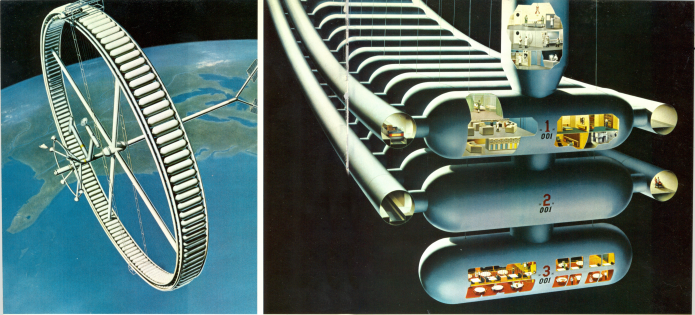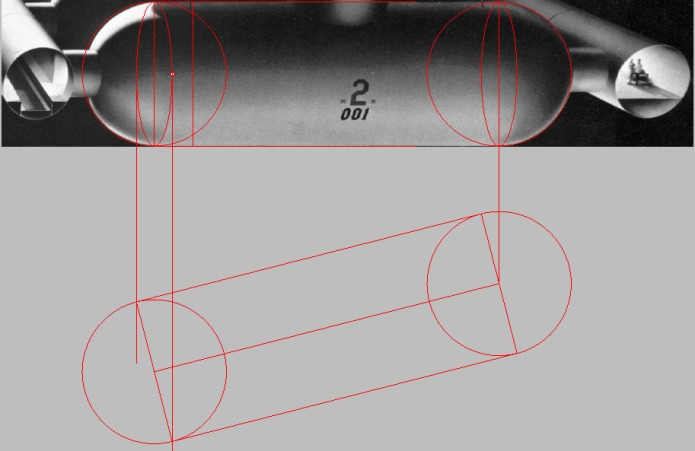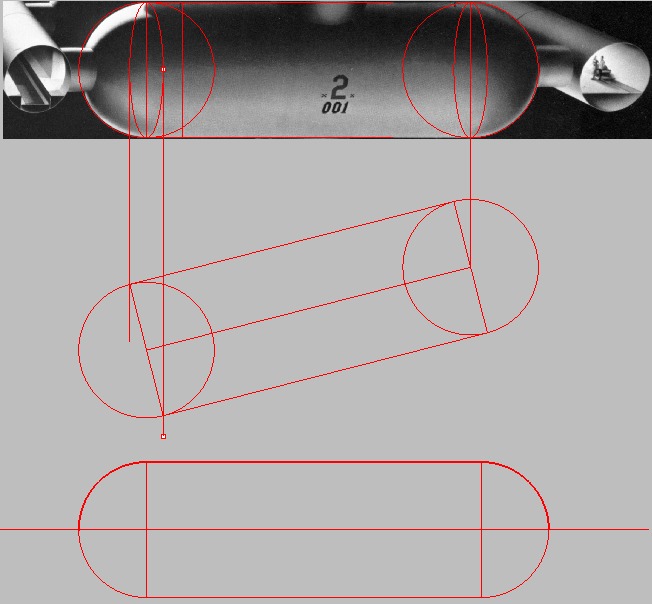In the previous installment I worked out what I think the diameter of the individual modules is on the very large Lockheed Space station in this piece of art:

At the time I devoted my efforts to diameter and just kinda half-assed the module length. Now behold, in this latest installment of Don’t You Have Anything Better To Do Theater as I work out the module length with greater precision and less guesswork, using image processing programs (specifically Paint Shop Pro) and CAD programs (specifically Rhino 3D).
First, clip out one of the clearer modules:
Second, using a perspective correction tool in PSP, straighten and align the module. The algorithm makes certain assumptions that may or may not be entirely accurate, but once again, ya work with what ya got.
Next import this image into a CAD program. Overlay the endcaps with matching circles. Add ellipses, centered on the circle, with major diameters matching the circles and minor diameter than line up, as best as possible, with the intersection lines between the modules cylinders and hemispherical endcaps.
Next, work out the “true top view” of the module. Copy the left-hand circle down. Use vertical lines drawn from the left and right-hand quadrants of the narrow ellipse to work out the cylinder/hemisphere intersection. Use a line perpendicular to that to crate the centerline of the module. Copy downwards the right-hand endcap circle until the centerpoint connects with the centerline.
Rotate the diagram so that the centerline is horizontal. Ta-da, there’s your module. New overall length: 1373 inches (114.4 feet).
The diameter remains the same, indicating that the designers might have been thinking of launching the modules with a Saturn V or a Saturn V derivative. But the length is pretty substantial. It’s impossible to say whether the modules were to be launched dry or wet. If wet, each launch would have been capable of taking a greater mass of payload into orbit by using the module as a propellant tank… presumably liquid hydrogen in a *very* modified S-II stage. But a great deal of effort would have been required on-orbit to outfit the empty tankage. It may well have been possible and even practical to build the tanks on the ground with the decks and bulkheads already in place, but all the equipment and whatnot would have to go in later.




